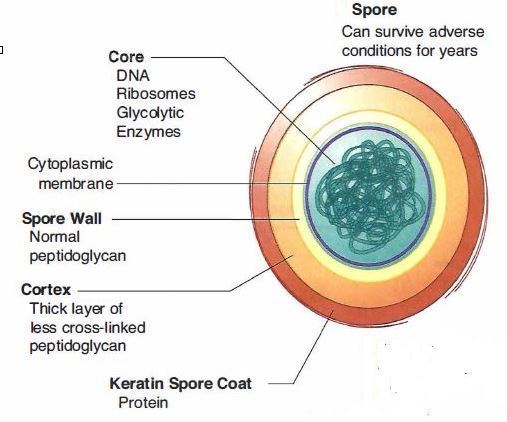

– Developmental Biology – NCBI Bookshelf”. The spore case or capsule, which contains millions of microscopic spores, is carried by a thin stem in mosses. – Developmental Biology – NCBI Bookshelf”.

Despite this, only the large megaspore lives in order to be fertilized.

A separate division through meiosis is exhibited by the megasporangium in the ovary (female) in order to produce one large megaspore and three small ones. In the anther (male), cells of the microsporangium divide through meiosis in order to create the microspores.However, the male and female gametophytes are produced in the flowers during the sporophyte generation. 1 A chief difference between spores and seeds as dispersal units is that spores have very little. Spores form part of the life cycles of many plants, algae, fungi and some protozoans. In angiosperms, the sporophyte is more dominant than the gametophyte generation. In biology, a spore is a reproductive structure that is adapted for dispersion and surviving for extended periods of time in unfavorable conditions.These events take place inside the organ that distinguishes angiosperms from all other plant types: the flowers. Among fungi, by contrast, spores can form either asexually (by. However this is not true because mitosis still follows meiosis during the sporophyte phase, creating a gametophyte that can produce either the sperm or the egg. Recall that in plants, spores form by meiosis. Usually, when water is present, the sperm in the antheridia swims to the eggs in the archegonia.Īngiosperms Life cycle (Flowering Plants) (Source: ) Angiosperms, or all flowering plants, may look like they have a diplontic life cycle because the gametophyte stage is just exhibited by very few cells. dif cile spores is in direct contact with the spore coat in an apparent similar fashion as the outermost crust layer of Bacillus subtilis spores 18,22,23. The term sexual means meiosis is involved. Spores that are formed by the process of meiosis are sexual spores and when formed from mitosis are asexual. The gametophyte generation is smaller than the sporophyte but is equally important because it is where fertilization takes place. For example, in Ascomycetes, sexual ascospores are produced endogenously whereas asexual conidiospores are produced exogenously.After that, each spore mitotically divides in order to produce the gametophyte that matures into antheridia (male) and archegonia (female).The spores are then produced when the sporangia undergo meiosis. Basically, the sporangia are covered by the indusiumand are altogether contained within the sorus (plural: sori).Based on the diagram above, the sporophyte generation is the more dominant phase and thus is independent of the gametophyte generation.Meaning, only one type of spore (called the sporangium) is produced by the sporophyte, and only one gametophyte is needed to develop the male and female sex organs.Īnother major difference between them is that both generations in the life cycle of ferns are autotrophic (can undergo photosynthesis).

However one major difference between the two is that most ferns are considered to be homosporous. Basically, ferns and fern allies, and mosses undergo almost similar developmental patterns. The nutritional tests were planned as a first step in studying the relationship between roots of pine and the fungi concerned, which are all mycorrhizal.Pteridophytes life cycle (Fern Plants) (Source: ) Ferns and fern allies are members of a group of plants called the Pteridophytes. The extensive studies of Fries (1941, 1943, 1949, 1966) have shown the latter to be a difficult problem. The twofold objective of this research was to isolate mycelium from freshly harvested fruit bodies in order to carry out tests on the nitrogen and carbon utilisation of these species and to attempt to find out the conditions necessary for the germination of Boletus spores. Much of the work being undertaken is directed towards investigating the reasons for the species growing in such diverse habitats, and it is hoped that the researches recorded here may contribute something useful to the work of the department. Some of these grow at quite a distance from trees in the regions of the sand dunes. Several species can be found nearby at Tentsmuir, Fife, in an area bordering the Nature Reserve. Studies in the genus Boletus have been in progress in the Botany Department of St Andrews University for a considerable number of years.


 0 kommentar(er)
0 kommentar(er)
